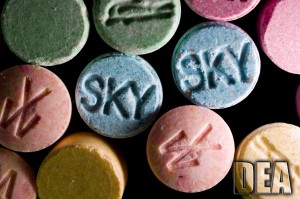Singers are infatuated with Molly
There has been this recent infatuation with a singers, rappers and song writers with a girl named "Molly" Except "Molly" isn't a person, "Molly" is a drug and there seems to be a concerted effort in the music industry to promote the use of this drug.
The NIDA Teen Blog Sara Bellum talks about the recent renewed interest in "Molly" In fact the Buzz was created back in 2012 when Madonna brought it, she mentioned “Molly” at Miami’s Ultra Music Festival. Madonna shouted to the audience, “How many people in the crowd have seen Molly?” Madonna was talking about the song “Have You Seen Molly?” by Cedric Gervais. However, “Molly” is also a nickname for MDMA. Many news outlets reported that the legendary pop singer was talking about drugs, not the song. Madonna responded by saying, “I don't support drug use and I never have.” Yet she brought it up, most likely to make her self more popular with the crowd. As did Miley Cyrus, because her new music video was so heavily edited she needed something to draw attention too herself and the album.
A story in the UK news source the Guardian news story that over the last year as we indicated above numerous singers and rappers have reference the drug in their lyrics. An Article in the New York Times talks about the dangers of Molly. The article sites the increase in "Molly" use to "Indeed, many attribute MDMA’s resurgence to the return of Electronic Dance Music (or E.D.M.), the pulsating Euro beat that has infiltrated the
sound of pop radio acts like Rihanna, Kesha and Katy Perry. The article goes on to point out that the drug is not always Ecstasy and in fact can be very dangerous...According to Dr. Halpern, many of the powders sold as Molly contain no MDMA whatsoever; others are synthetic concoctions designed to mimic the drug’s effects, Mr. Payne said. Despite promises of greater purity and potency, Molly, as its popularity had grown, is now thought to be as contaminated as Ecstasy once was.
Regardless of where the interest, infatuation or reason for why the increased reference to "Molly" came from, is irrelevant. What is sure to occur though is that these references will certainly inspire young people to try Ecstasy and place many of them at risk for severe medial issues. We have included information from NIDA Drug Facts worksheet below about what Ecstasy is. Parents be aware!
ABOUT ECSTASY


Comments